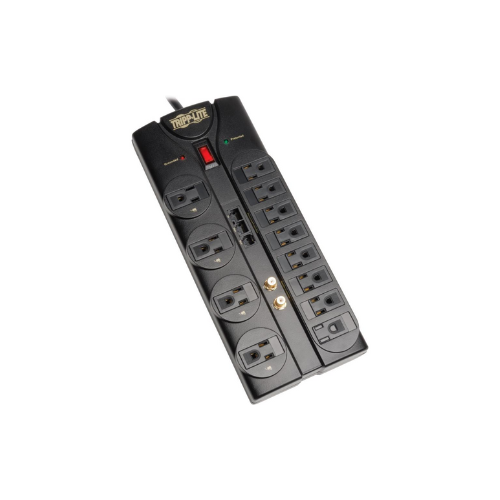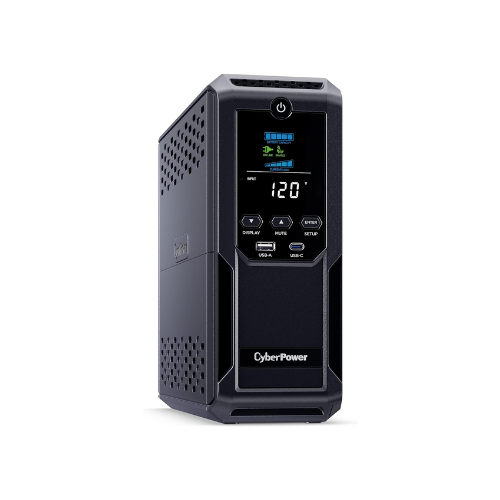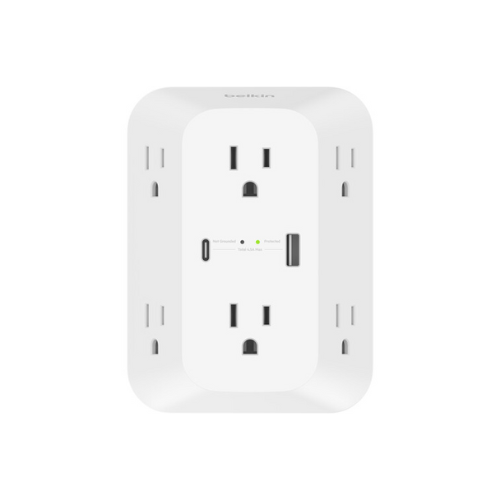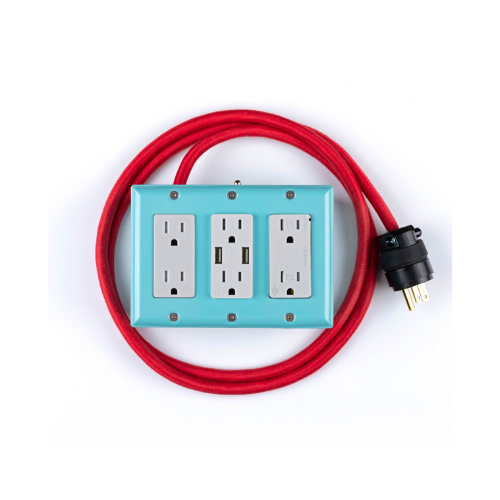The Best Surge Protectors, According to Electric Engineers and Household Electricians

Our editors independently select the products we recommend. We may earn a commission on items bought through our links.
Blackouts, brownouts, non-colorized issues with the power grid, and good old-fashioned lightning strikes can all cause power surges, which sound a lot cooler than they are. A bad one can instantly destroy televisions, stereos, guitar amps, air purifiers, and pretty much anything else that plugs into the wall in one’s home. To avoid this kind of electronic calamity is simple: buy and use a surge protector (or three) that does precisely what its name implies.
Today's Top Deals
There are surge protection options that electricians can install to help protect the whole house, but the cheaper, simpler option is a plug-in device that keeps electronics safe (and adds a few extra outlets, to boot). While there are some higher-tech options — with features like energy monitoring, remote operation, and battery backups — most people will be happy with a device that’s affordable, easy to install, and effective.
As homes host more and more expensive electronics, from pricey theater setups to tricked-out offices, surge protectors have become more and more necessary. They can guard against a wide variety of surges, and they almost always cost a lot less than the stuff they’re protecting.
What the Experts Say
Sources within relevant fields — electrical engineers, high-end audio-video equipment specialists, and electricians — say that surge protection is vital to protecting anything that plugs into the wall. For this story, SPY spoke with David Davis, founder of Davis Audio & Video; Stellar Jackson, electrical engineer at Portable Power Guides; and David Miloshev, an electrician at Fantastic Electricians, to help sort through the best surge protectors available now.
The kind of plug-in protectors consumers purchase for home use are what Jackson calls “guardians for electronic devices.” Miloshev adds that “Strategically placed within the consumer unit, they detect and divert excess voltage, safeguarding valuable electronics. In this way, they minimize the risk of damage and enhance the overall reliability of electrical systems.”
They can only do this, of course, if they are true surge protectors.“The cheap surge protectors you buy at drugstores don’t do much of anything for protection,” Davis says. “They only give you more outlets.”
The first thing to look for when shopping for a surge protector is a joule rating, which is a measurement of how much of a surge a protector can absorb over time. “Usually, a rating between 500 and 1,000 joules is sufficient for small devices,” Miloshev says, “whereas [with] sensitive and expensive electronics (gaming consoles, computers, etc.), aim for a surge protector rating of over 2,000 joules.” Davis, for one, recommends a 5,000 joule rating for high-end AV equipment.
Other numbers to look for are voltage protection rating, a measure of how much voltage a surge protector will “let through” when tested (lower is better), and clamping voltage, the voltage level needed to activate surge protection (lower is better).
Less technically, it’s important to make sure that a surge protector has enough outlets for your needs (including some spaced further apart to accommodate larger plugs), as well as a warranty and UL certification, which signifies that independent testing has confirmed the device meets safety standards. Because a surge protector that stops a surge but starts a house fire isn’t all that useful.
Surge protectors are insurance policies for expensive stuff. So the typical price tag of a good surge protector, around $50, is a real bargain compared to the cost of a new laptop or tablet. The most heavy-duty surge protector isn’t needed to protect a toaster from a power surge, it’s a no-brainer for more expensive gear.

BEST OVERALL
Tripp Lite TLP1208SAT 12-Outlet Surge Protector Power Strip
Buy from home depot
Buy from new egg
Multiple experts mentioned this Tripp Lite surge protector by name, citing its impressive electric specs, larger-than-normal device capacity, and guaranteed protection.
Steve Brown, founder of Battery Chargers Info, says this model “can handle any power surge you can throw at it,” thanks to a 2,160-joule rating, 330-volt clamping voltage, and UL 1449 certification, which means it meets third-party standards for surge protectors. The biggest differentiator, however, might be the limited lifetime warranty and $250,000 insurance that covers damage to equipment caused by a power surge.
This kind of protection for less than $50 is a tremendous value, part of what makes this model the best overall surge protector on the market.

BEST BATTERY
CyberPower LCD UPS System
Buy Now On Amazon
While power outages pose less of a risk to devices themselves than power surges, they’re still a real annoyance — but, luckily, one that this combination surge protector-uninterruptible power supply addresses.
Jackson says this device is “ideal” for those who want protection from surges and outages, with a backup battery that keeps even sensitive devices keep humming along, no matter what. “With 1500VA/900W capacity, it ensures uninterrupted power during outages,” he says.
This device is priced higher than surge protector-only models, but its $190 price tag isn’t exorbitant considering its dual uses.

BEST COMPACT
Belkin SurgePlus 6-Outlet Wall Charger with USB-A/USB-C
Buy Now From B&H
Bulky surge protectors are fine to stash behind TVs or computer setups, but smaller options — like this Belkin charger that sits directly on the outlet — are better for charging setups.
Miloshev says that “usually, a rating between 500 and 1,000 joules is sufficient for small devices,” so the 1,680 joule rating on this small protector means it’s more than up to the task of keeping cell phones, tablets, and the like safe. Its form factor covers the outlet and expands its capabilities from two to six devices plus USB-A and USB-C charging ports.
For a little over $20, this surge protector is a fantastic deal that keeps the most vital devices in people’s lives charged and protected.

BEST STYLE
Conway Electric 6' Exto Surge 900
Buy Now
In a sea of purely functional surge protectors, this colorful option is designed to be seen.
First things first: the joule rating on this surge protector is a relatively low 900, meaning there are better options for sensitive equipment. It does fall within the 500 to 1,000-joule range Miloshev calls “sufficient for small devices,” so it’s a stylish way to charge devices, plug in non-sensitive electronics, and add a pop of color where it’s least expected.
At nearly $200, the Exto Surge 900 is doubtlessly expensive given the relatively light protection it provides. And while the look is certainly part of the upsell, the fact that it’s a nearly 3-pound hunk of steel and aluminum means it feels solid enough to command a premium.
Frequently Asked Questions About Surge Protectors
Who Needs a Surge Protector?
“If you live in an area prone to storms or blackouts, you need a surge protector to protect your electronics from wild power surges, spikes, or fluctuations,” Brown says. That’s because power surges have many causes — not just lightning.
We’d add that the fairly low cost of entry means that even those living without these regular risks would do well to use surge protectors to keep their most valuable electronics safe from surges, however unlikely they may be.
Do Surge Protectors Need to Be Replaced?
Surge protectors eventually wear out, and they should be replaced at a minimum every five years (more often, say every two, if they’re used more often). Many models come with lights that indicate protection is active; when they stop lighting up, it’s time for a replacement.
I’ve Had This Power Strip For a Decade—Isn’t That Enough?
It’s not! Firstly, many power strips are simple outlet multipliers that provide no protection from surges. Secondly, surge protectors need to be replaced every few years, which means that the strip you bought during the Obama administration isn’t doing much anymore.
More Top Deals from SPY
Best of SPY
